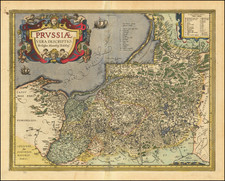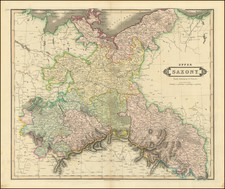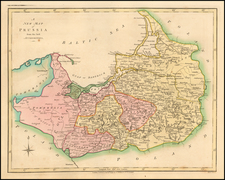Rare map of Silesia, centerd on the course of the Oder River, published in Vienna, published under the auspices of the Jesuit Order.
Published around 1739, the map offfers a detailed representation of Silesia, anchoring its geographical significance during a time of intense dynastic and military conflict in 18th-century Europe. This era witnessed the ascension of Prussia as a European power, challenging the traditional hegemony of the Habsburgs, with Silesia as a focal point of these geopolitical shifts, especially during the Silesian Wars.
The cartouche in the map's lower left corner, while artistically elaborate with allegorical figures, serves a practical purpose, delineating the name and territorial claim over Silesia. The iconography within the cartouche is indicative of the region's perceived importance by the map's creators and patrons, reflecting the identity and historical claims of the area.
In contrast, the image in the upper right displays a serene landscapek an idealized vision of Silesia’s natural beauty and tranquility, an artistic counterpoint to the political realities of the time. It exemplifies the baroque era's aesthetic tendencies in mapmaking but remains grounded in the actual features of the Silesian terrain.
The geopolitical history of Silesia in the 18th century is marked by its strategic value, with its fertile lands and the Oder River, a crucial commercial waterway. The map's precise indications of towns and fortifications underscore the region's importance to the contending powers.
As a scholarly piece, the map reflects the Jesuit commitment to education and knowledge dissemination. The Society of Jesus, known for its scholarly pursuits, likely provided the academic rigor behind the map's creation. The engraver, J. A. Pfeffel, executed his work with clarity, contributing to the map’s utility for both scholarly and strategic applications.










![(First World War - Battle of the Vistula River) восточного отряда по Ивангородскому Маневру [Eastern Detachment Along the Ivangorod Maneuver]](https://storage.googleapis.com/raremaps/img/small/78086.jpg)

![Повстанцы 1863 Года [(Polish) Insurgents of 1863]](https://storage.googleapis.com/raremaps/img/small/52719.jpg)

![(Ukraine, Poland, Russia, Georgia, Armenia) [Tabula II Asiae]](https://storage.googleapis.com/raremaps/img/small/102937.jpg)